Special Seminar Report
copyright © 2017 Douglas Tong, all rights reserved
__________________________________________________
On July 16, 2017, we had the pleasure of having Jack Hathway Sensei visit us and conduct a special one-day seminar on the arts of Yagyu Shinkage Ryu and Yagyu Shingan Ryu Taijutsu.
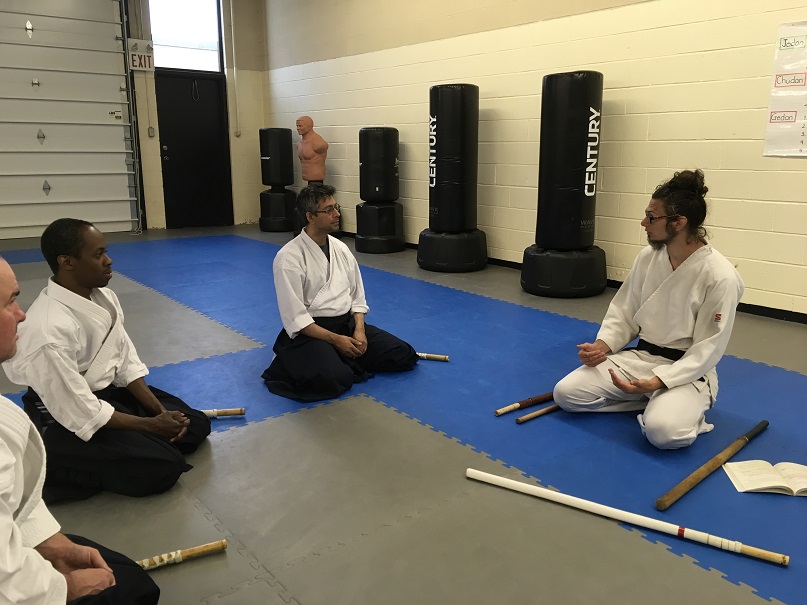 Hathway Sensei talking to the students about the history and tradition of the Yagyu arts
Hathway Sensei talking to the students about the history and tradition of the Yagyu arts
Hathway Sensei hails from Wisconsin and is the leader of his Wisconsin study group. He studied 11 years in Japan under Kajitsuka Sensei and the other teachers of Arakido. I met Jack Hathway Sensei back in 2008 in Tokyo. He was the main interpreter who helped me when I interviewed Kajitsuka Sensei right after the keiko at the Tokyo Dojo in July of 2008. This was the first time I had seen him since 2008.
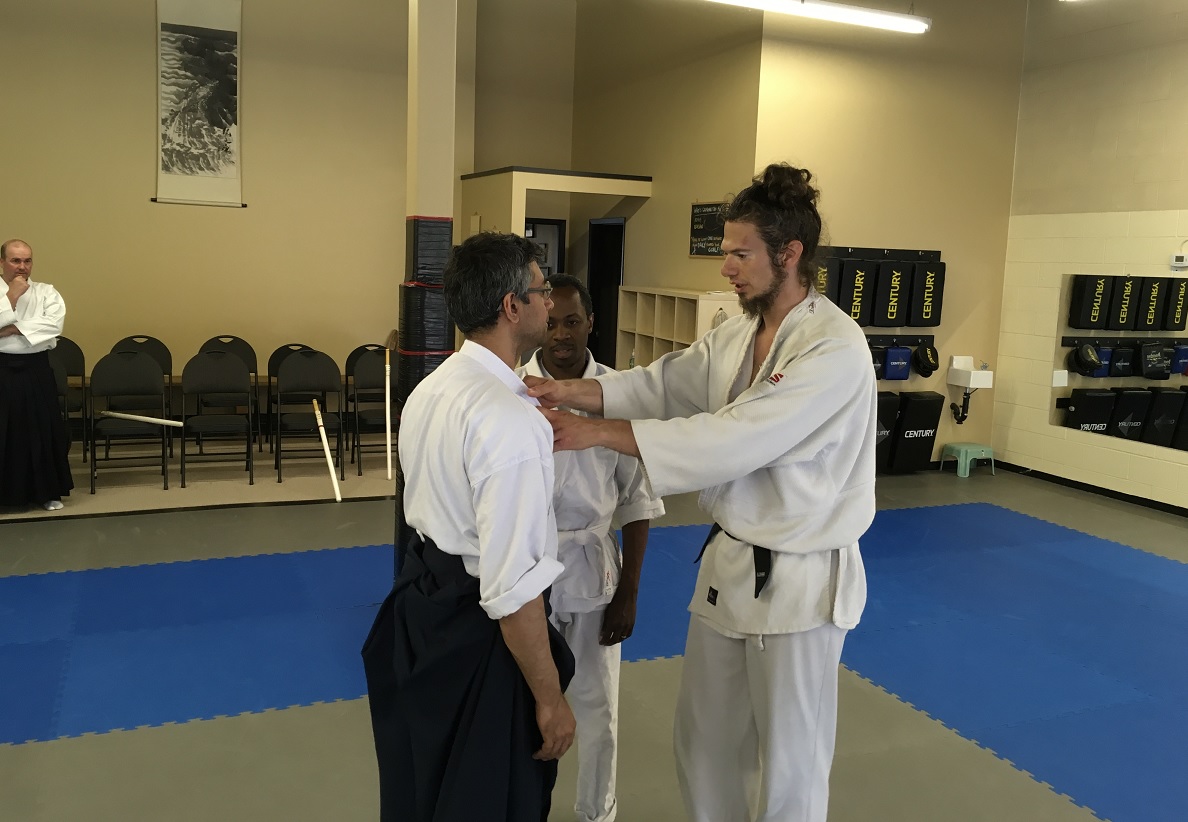 Hathway Sensei going over some fundamental points about the lapel grab in Yagyu Shingan Ryu
Hathway Sensei going over some fundamental points about the lapel grab in Yagyu Shingan Ryu
On his visit, he went over Sangakuen-no-Tachi. As one student reflected, “The importance of timing, rhythm, distancing, were reinforced; but the naturalness of movement and reality-based flow and movement were emphasized.”
Of particular note was the focus on “Ken-Tai Hyori”, one of the high principles of Yagyu Shinkage Ryu. It was an eye-opening experience for our practitioners as they got to experience the principle of “Ken-Tai” up close and personal, in a realistic way.
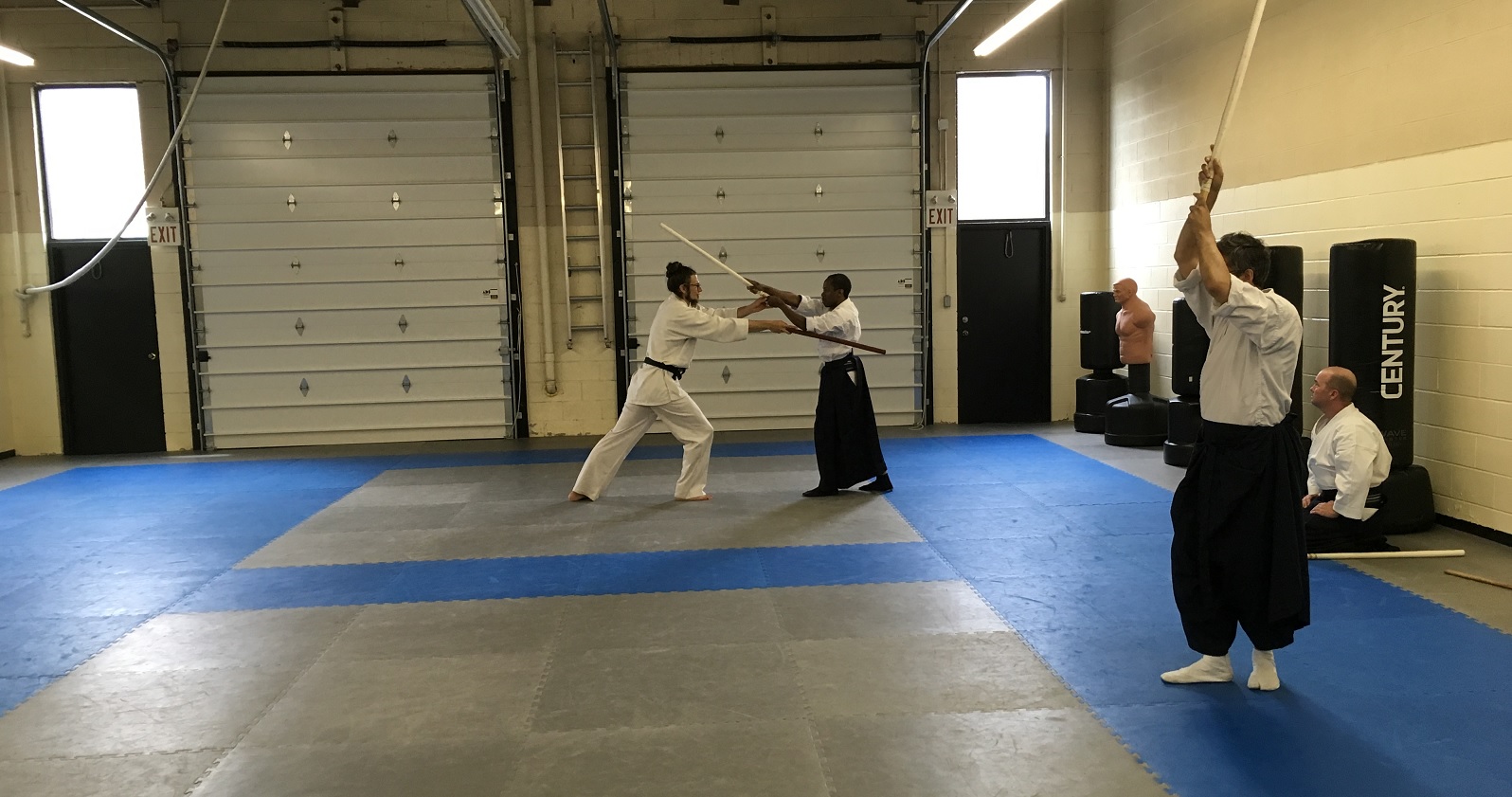 Imparting some details about how to strike with the sword
Imparting some details about how to strike with the sword
While our practitioners can perform the kata, they realized quickly that they don’t really “know” the kata. Not inside-out. They know the movements but more akin to a dance, going through the motions, sleep-walking through the kata. When Hathway Sensei started to apply pressure, our students fell apart. When he ramped up the speed, they were not used to facing that type of quickness. When he changed up the rhythm, they couldn’t adapt. When he became intense and came at them hard, they became scared and went into a shell. In some cases, they even froze, paralyzed by fear or uncertainty. They started forgetting what the next move was. In other cases, they started interchanging moves between different katas.
 Exploring the devastating power of Yagyu Shingan Ryu
Exploring the devastating power of Yagyu Shingan Ryu
After being hit many times, they lost confidence. They became daunted, intimidated. They were rattled and shaken. Almost like shell-shock. They lost their composure. This same student remarked in his post-seminar reflections: “What was most striking was the shaping and expression of the MARTIAL aspects of Yagyu Shinkage and Yagyu Shingan Ryu movements and flow. A reminder that these arts were borne in the vicissitudes of war and post-war times. Perhaps implicitly, but this seemed to further emphasize the importance in the Yagyu arts, I think, also of the ethics of using the sword and the mind that guides the sword.”
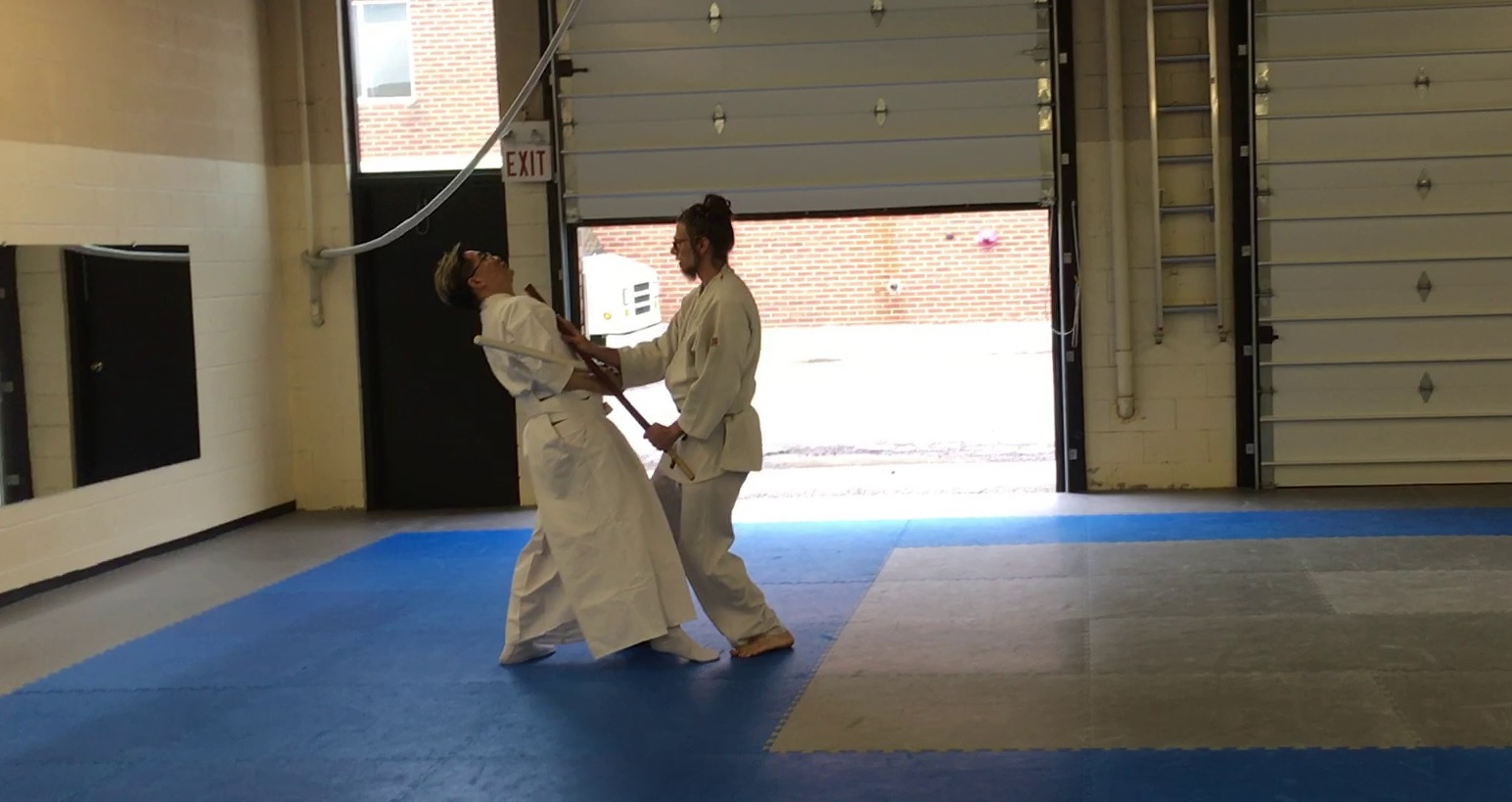 Hathway Sensei applying pressure and intensity
Hathway Sensei applying pressure and intensity
When a sword is coming at you fast, you have to do something. The kata teaches you what to do. It teaches you one solution to this problem. It is just one solution. But even if you can only do that, this is fine. You have to do something. But to freeze up means death. This is the fight-or-flight response that kicks in in response to a perceived harmful event, an attack, or a threat to your survival. Some animals will flee or cringe, some will get angry and fight back, and some will freeze like a deer in the headlights. You may think you’re pretty good, pretty tough, or pretty calm and collected, until you are put in that situation and then you will see the real you.
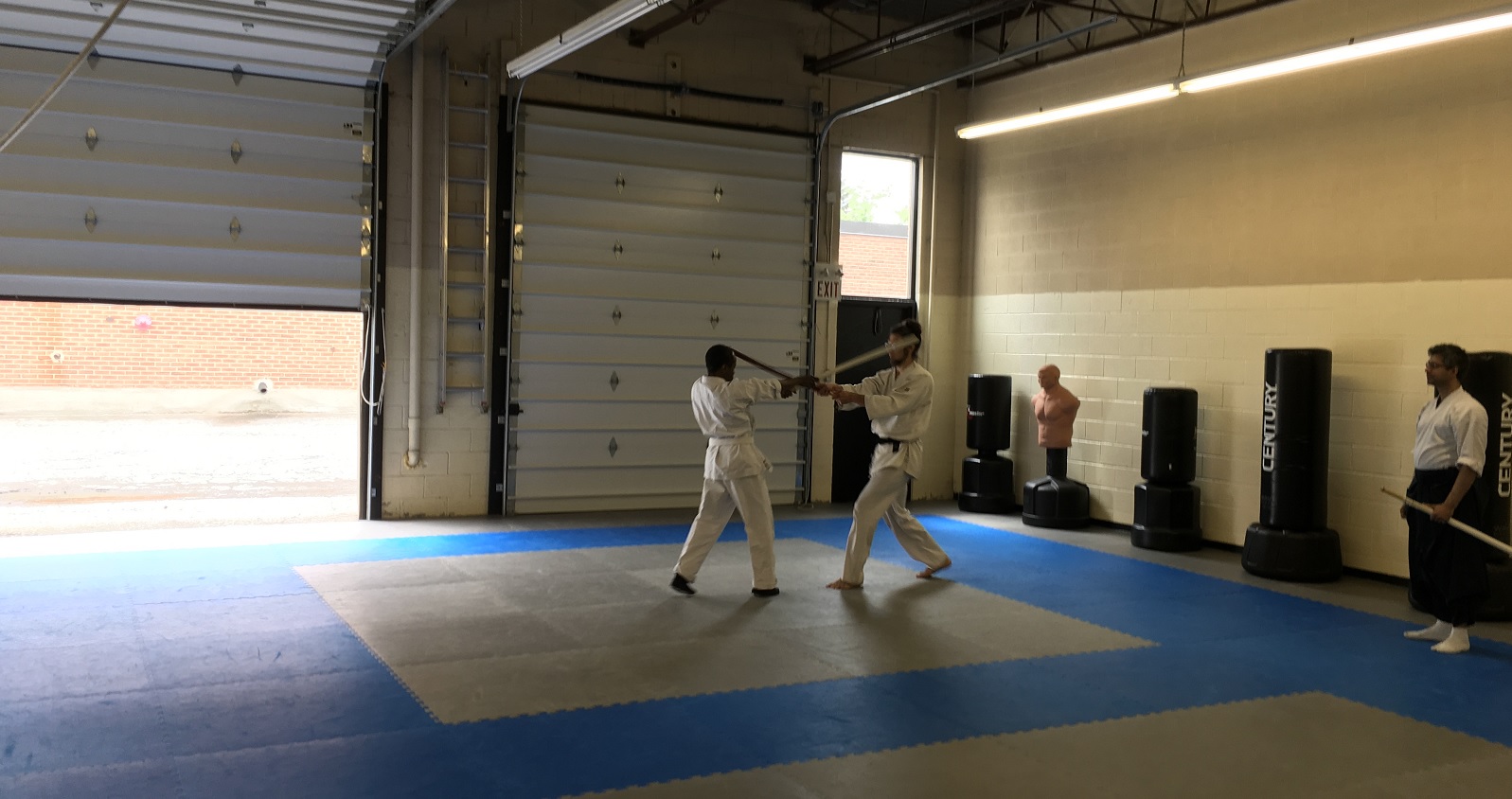 Getting hit is not pleasant
Getting hit is not pleasant
In other cases, they did not adapt to what the opponent was doing. One of the hallmarks of Yagyu Shinkage Ryu is the ability to adapt to what your opponent does. Our students did not adapt. If they did, it was not quick enough. Which I guess is tantamount to the same thing. Adapting requires that you are thinking and perceiving what is happening in the moment and responding in that moment. You need to think fast and come up with solutions fast.
 Under duress
Under duress
It was an enlightening experience. It might not have been pleasant for our students but it was an invaluable lesson. They learned how much they don’t know the kata. They are still at the beginner stage. Everything is easy when it is slow and at a relaxed pace. It is not so easy when you are under duress and pressured by an aggressive opponent bent on hitting you. This is the next level, after you have mastered the rote memorization of the movements of the kata. Hathway Sensei took them to the next level and they were not ready.
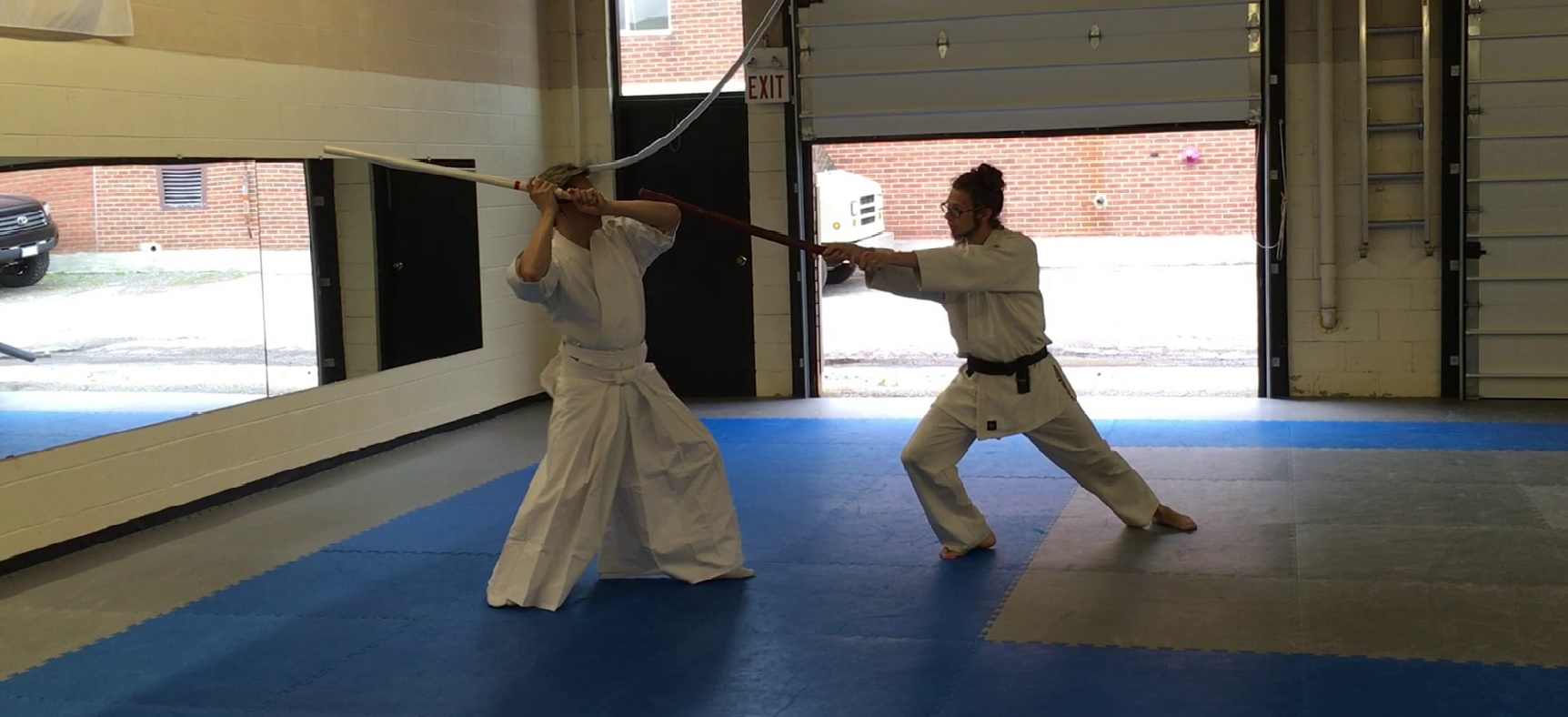 Dealing with pressure is an important part of learning
Dealing with pressure is an important part of learning
A lot of it had to do with mental issues. I remember the book Dune by Frank Herbert. The famous phrase from that book was: “Fear is the mind-killer.” It truly was in this case. Fear paralyzes you and makes you forget things. Many of the things we had drilled over and over, simple, basic fundamentals went out the window once the onslaught began. As our courageous student mused further, “The martial aspects (including controlled aggression and specific psychological tactics) of this higher kenjutsu art were aptly revealed during flow patterns where Sensei Hathway would provide the role of an opponent with purposeful intention, without accommodation, and commitment to his chosen attack. This prompted a natural reaction, that could be focused into a more conditioned and skillfully developed natural response.”
Another student put it more succinctly, “Once I started getting hit, all I could think of was trying not to get hit more.” So, all thoughts of attack, counter-attack, control went out the window. In the face of intense pressure and as you are getting beaten, you get muddle-headed and fear of more punishment and how to avoid it starts to dominate your thoughts. It is an instinctive response, a primal response, like staying away from fire, and it is driven by fear.
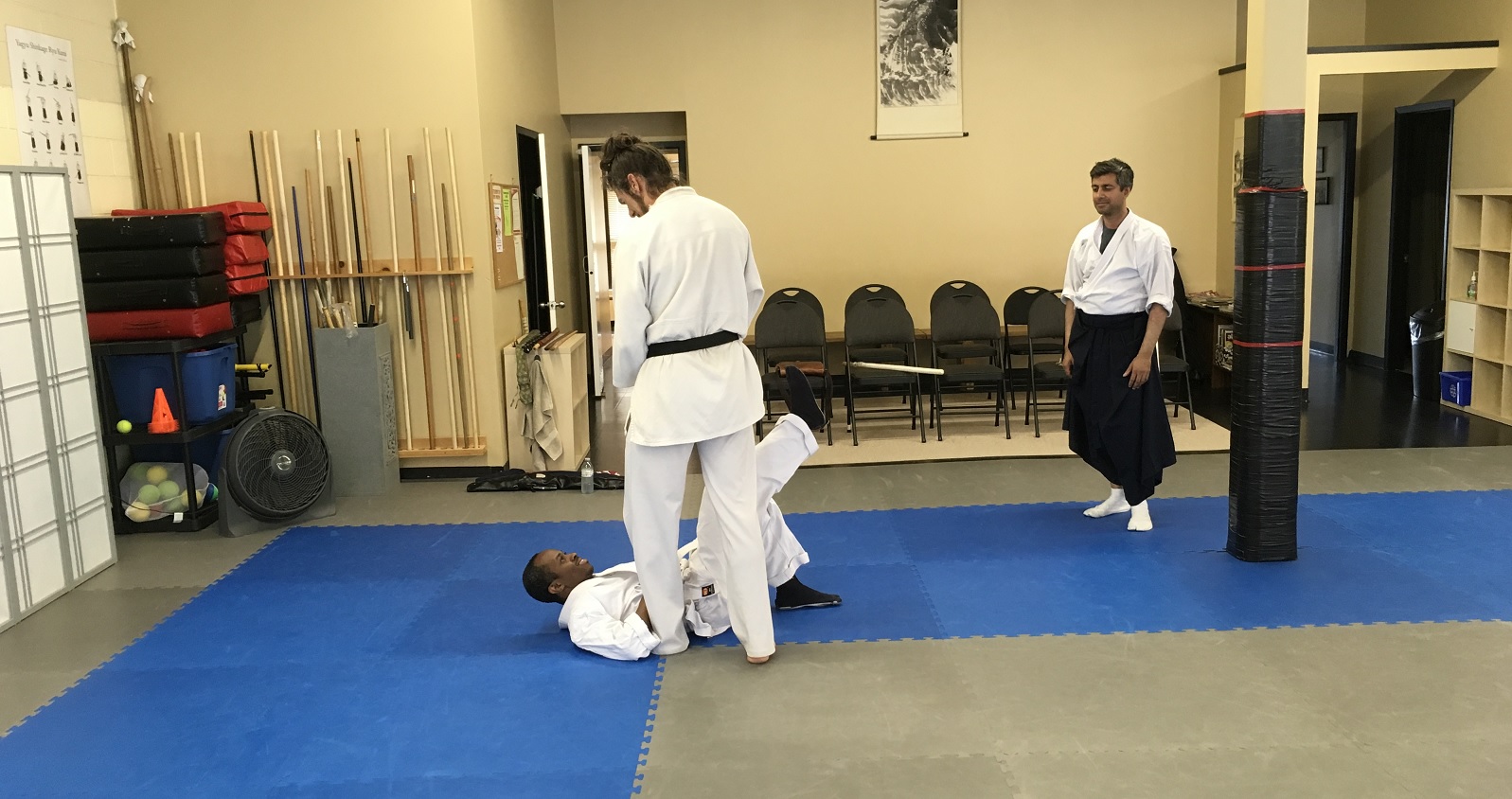 Fear is the mind-killer
Fear is the mind-killer
“I must not fear. Fear is the mind-killer. Fear is the little-death that brings total obliteration. I will face my fear. I will permit it to pass over me and through me. And when my fear is gone, I will turn and face fear’s path, and only I will remain.”
Paul Atreides
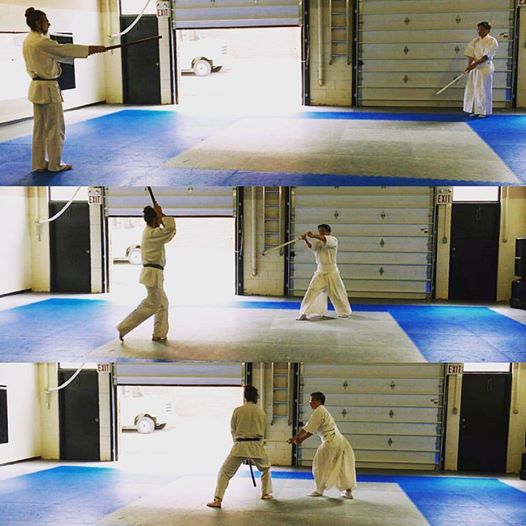 Face your fear and trust in your training. That is the value of training
Face your fear and trust in your training. That is the value of training
Like a key axiom: when the opponent raises their sword, you raise yours. Sometimes they didn’t raise their sword in time, either too slow or they forgot to raise their sword because they were paralyzed by fear. Other times, they panicked and raised their sword first or too early. Our student remarked, “I was fascinated by Hyori, a core concept in dueling skill and an essential principle to understanding the structure of our level A, B, C exercises in managing the events that are generated in a duel. The forms of agency implied in ken-tai, ken-ken, tai-tai coupling were also thought-provoking.”
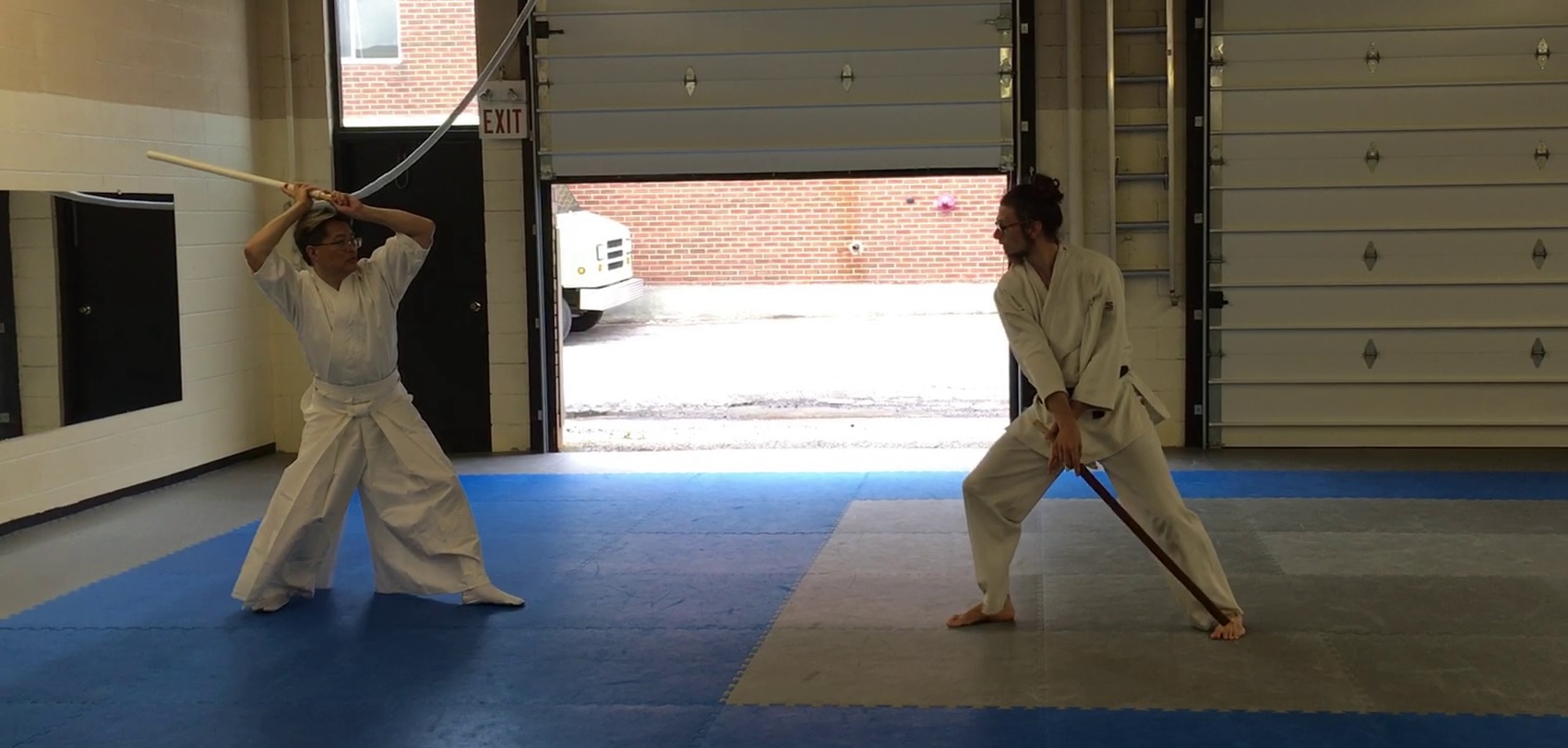 Hathway Sensei demonstrates the principle of Zanshin: He is “ready”, waiting, and unafraid.
Hathway Sensei demonstrates the principle of Zanshin: He is “ready”, waiting, and unafraid.
“Before the combat begins, you must assume that the opponent will take an attack stance and you should never allow yourself to be off guard. If you are not even ready to think that the opponent will take an attack stance and if, the moment the fight begins, you are attacked sharply in a rapid succession of moves, you will not be able to make any move, let alone use what you have learned in daily exercises.”
Yagyu Munenori
Heiho Kadensho
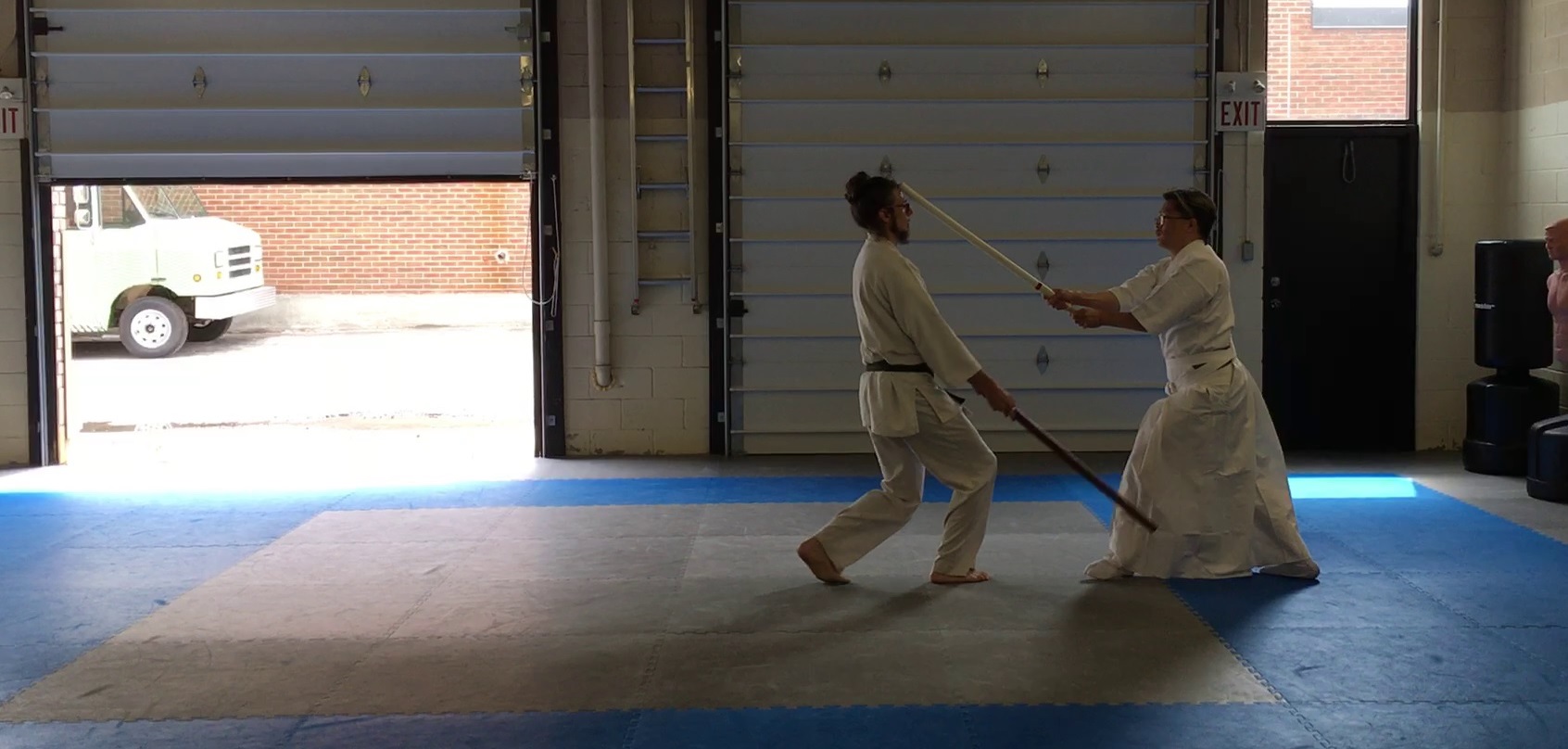 Training teaches you how to be calm and cool under pressure
Training teaches you how to be calm and cool under pressure
But in a positive way, this experience gives us a blueprint on how to progress. It showed us where we are and what we still have to do. We have a long way to go. It also showed us how really important mental issues are. This was discussed and focused on a lot by Munenori in the Heiho Kadensho. Now we know why. In the heat of the moment, our students forgot even basic things like when to raise your sword, zanshin (never dropping your guard), the timing of when to cut, and other fundamental things that have been learned from the very first lesson. The mind and your control of it is so important. As our intrepid student discovered, “Apparent very early on, was how our training tool, the fukuro shinai, can be optimally used as a striking instrument in practice, with proper zanshin, and mindful intent to respond to, or lead an opponent’s rhythm and intentions.”
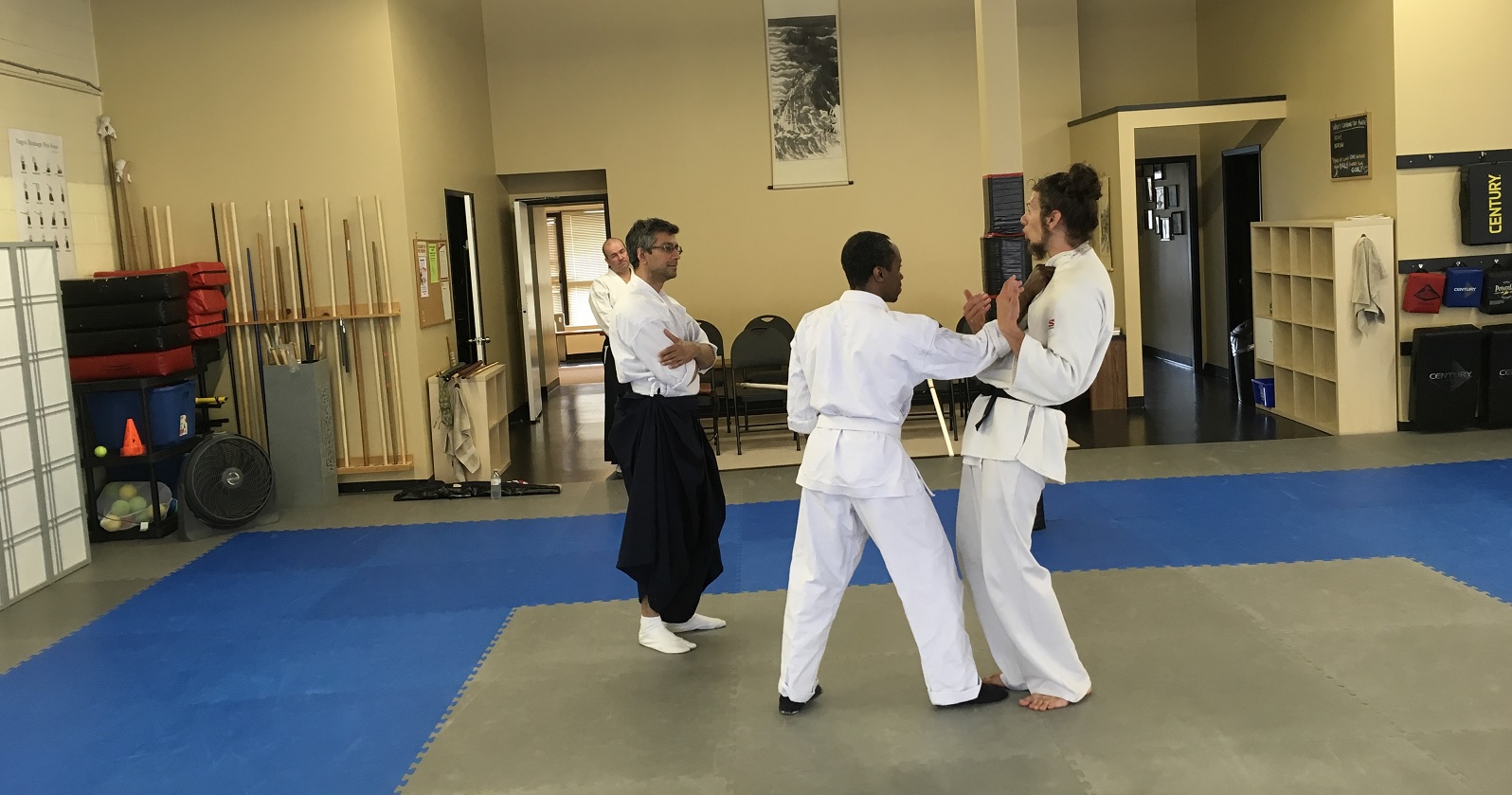 Hathway Sensei discusses with the students how to deal with certain scenarios
Hathway Sensei discusses with the students how to deal with certain scenarios
On another positive note, this was also an invaluable opportunity for our students to experience another type of practitioner. Hathway Sensei is young, tall, big, and strong. He is also very fast and aggressive. Furthermore, he is experienced. That is a very difficult combination to face. That is also part of training: dealing with different types of opponents.
Finally, our student was struck by the fact that even in the midst of aggressive and heated training, a level of etiquette was still adhered to: “Upon reflection, I realized how formal etiquette and ethical behaviour are understood as important for training as these become performative spaces where particular forms of life and death conversations are enacted.”
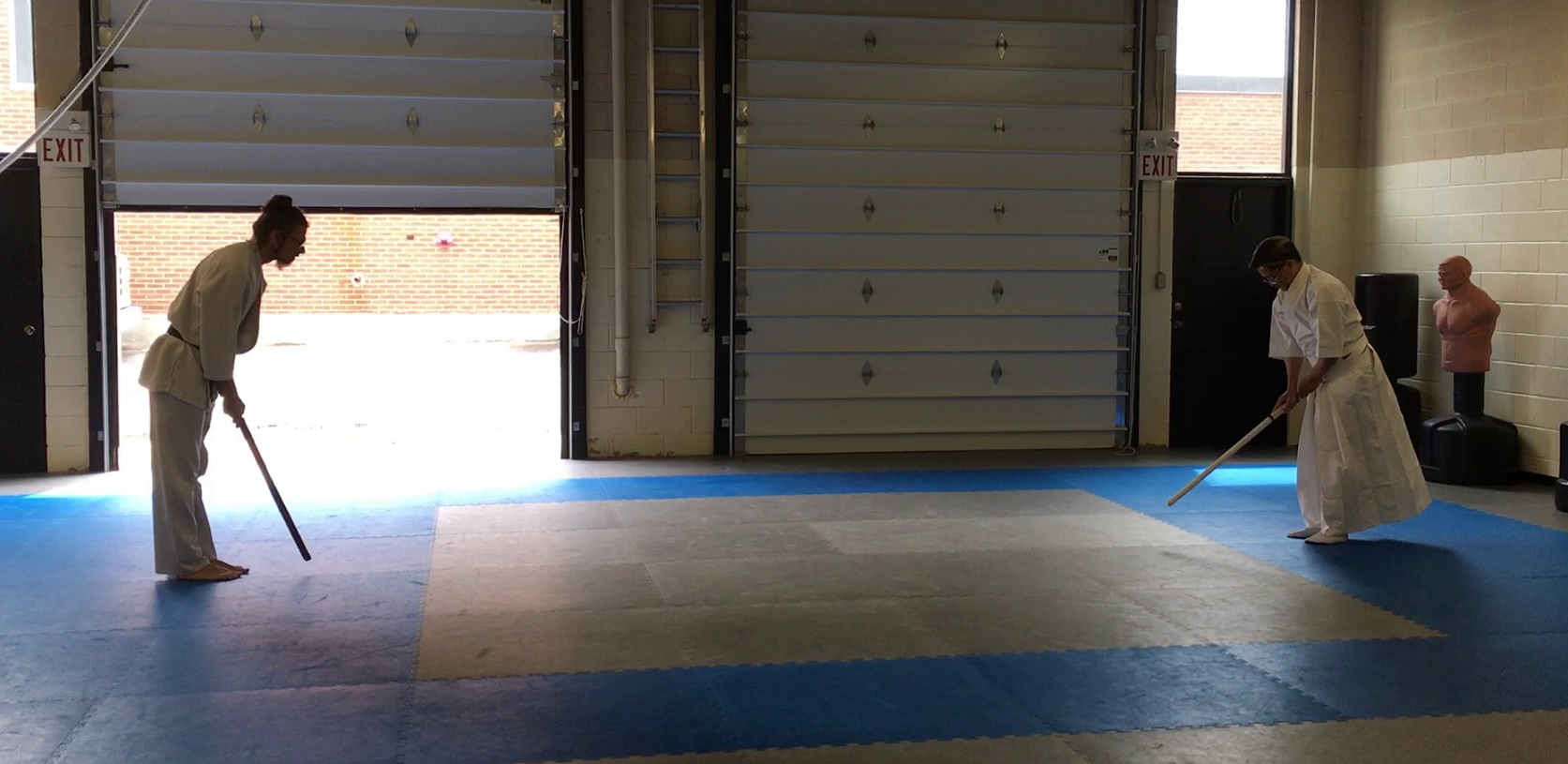 The Warrior’s Law in budo: Training begins and ends with courtesy and respect
The Warrior’s Law in budo: Training begins and ends with courtesy and respect
For our students who came, it was a lesson they will not soon forget. And that’s a good thing. Setbacks and trials have a way of teaching us some really important lessons if we reflect on them and learn from them. As our steadfast student realized later, “The seminar was rich in terms of historical clues and traditional antecedents, personal experiential pearls, and the application of core concepts such as Ken-Tai Hyori. Enjoyable too was discussion of the value of the Heiho Kadensho in terms of history and technical understanding.”
So kudos to our students who came out this day; they got to experience something really special. As they say in Japan, those who truly want to learn and progress show up. Or in the words of Hathway Sensei, “Those who show up, show up. Those who don’t, don’t.”
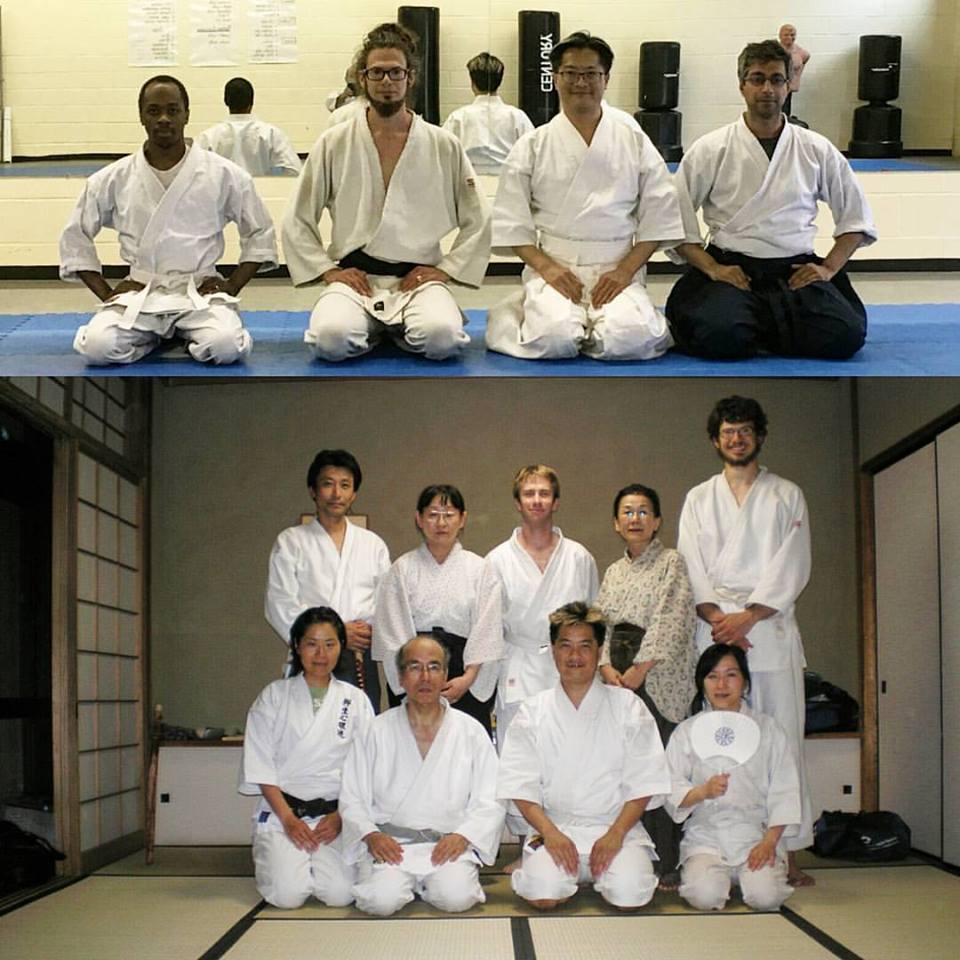 Destiny: Our paths first crossed in Tokyo in 2008 and our paths crossed again in Toronto in 2017.
Destiny: Our paths first crossed in Tokyo in 2008 and our paths crossed again in Toronto in 2017.
Finally, I personally want to thank Jack Hathway Sensei for coming and conducting this seminar at our dojo. All in all, it was a great experience! It was also good to see him again after so many years. Now that he’s back in Wisconsin (which is only a 10-hour drive away), I know we will be seeing each other again very soon. 😉
Douglas Tong
Tokumeikan
Toronto, Ontario, Canada
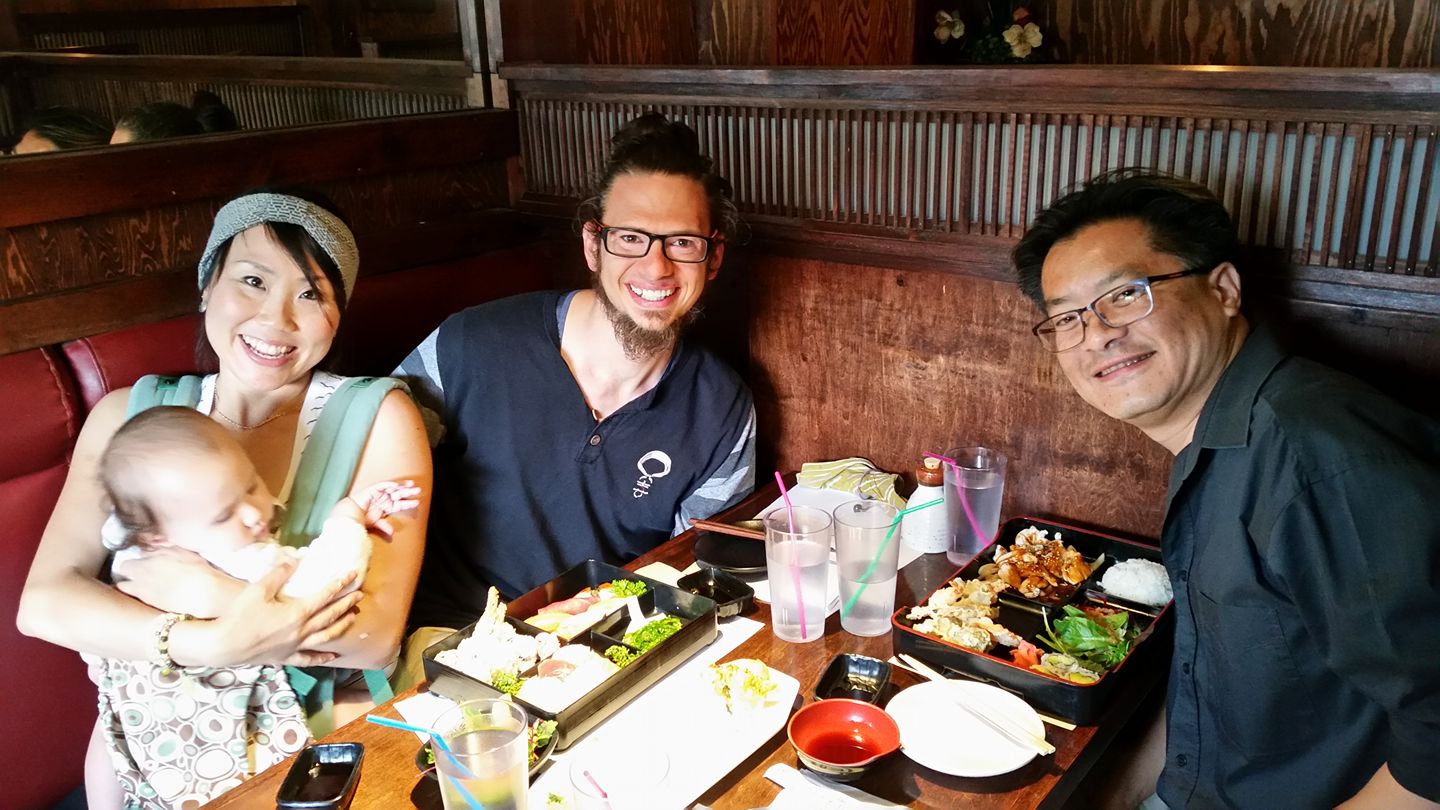
__________________________________________________
For more photos from this event, please visit either of these sites:
Tokumeikan’s Facebook page: Tokumeikan on Facebook
Tong Sensei’s Facebook page: Tong Sensei on Facebook
